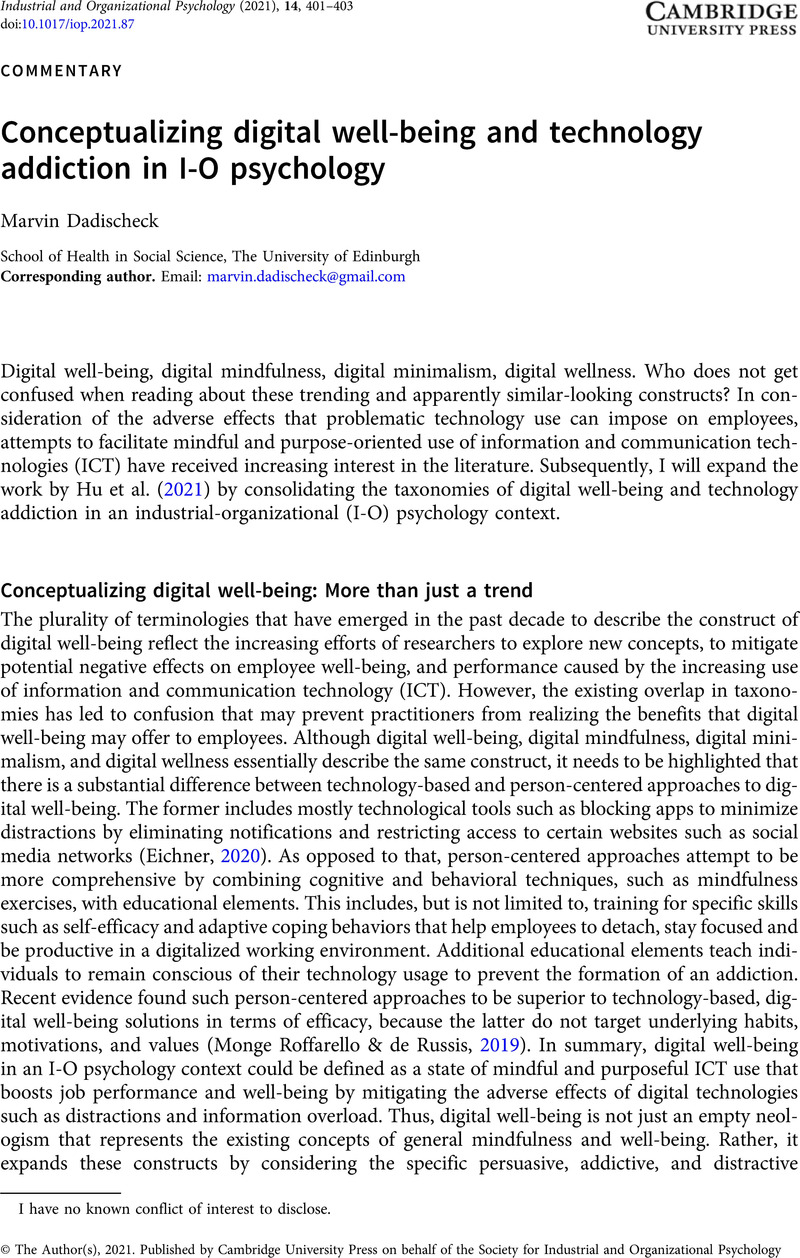Crossref Citations
This article has been cited by the following publications. This list is generated based on data provided by Crossref.
Vanden Abeele, Mariek M. P.
and
Nguyen, Minh Hao
2022.
Digital well-being in an age of mobile connectivity: An introduction to the Special Issue.
Mobile Media & Communication,
Vol. 10,
Issue. 2,
p.
174.
Moshel, Michoel L.
Warburton, Wayne A.
Batchelor, Jennifer
Bennett, Joanne M.
and
Ko, Katherine Y.
2023.
Neuropsychological Deficits in Disordered Screen Use Behaviours: A Systematic Review and Meta-analysis.
Neuropsychology Review,
Herrero, Juan
Rodríguez, Francisco J.
and
Urueña, Alberto
2023.
Use of smartphone apps for mobile communication and social digital pressure: A longitudinal panel study.
Technological Forecasting and Social Change,
Vol. 188,
Issue. ,
p.
122292.
Marsh, Elizabeth
Perez Vallejos, Elvira
Spence, Alexa
and
Pu, Bo
2024.
Mindfully and confidently digital: A mixed methods study on personal resources to mitigate the dark side of digital working.
PLOS ONE,
Vol. 19,
Issue. 2,
p.
e0295631.





